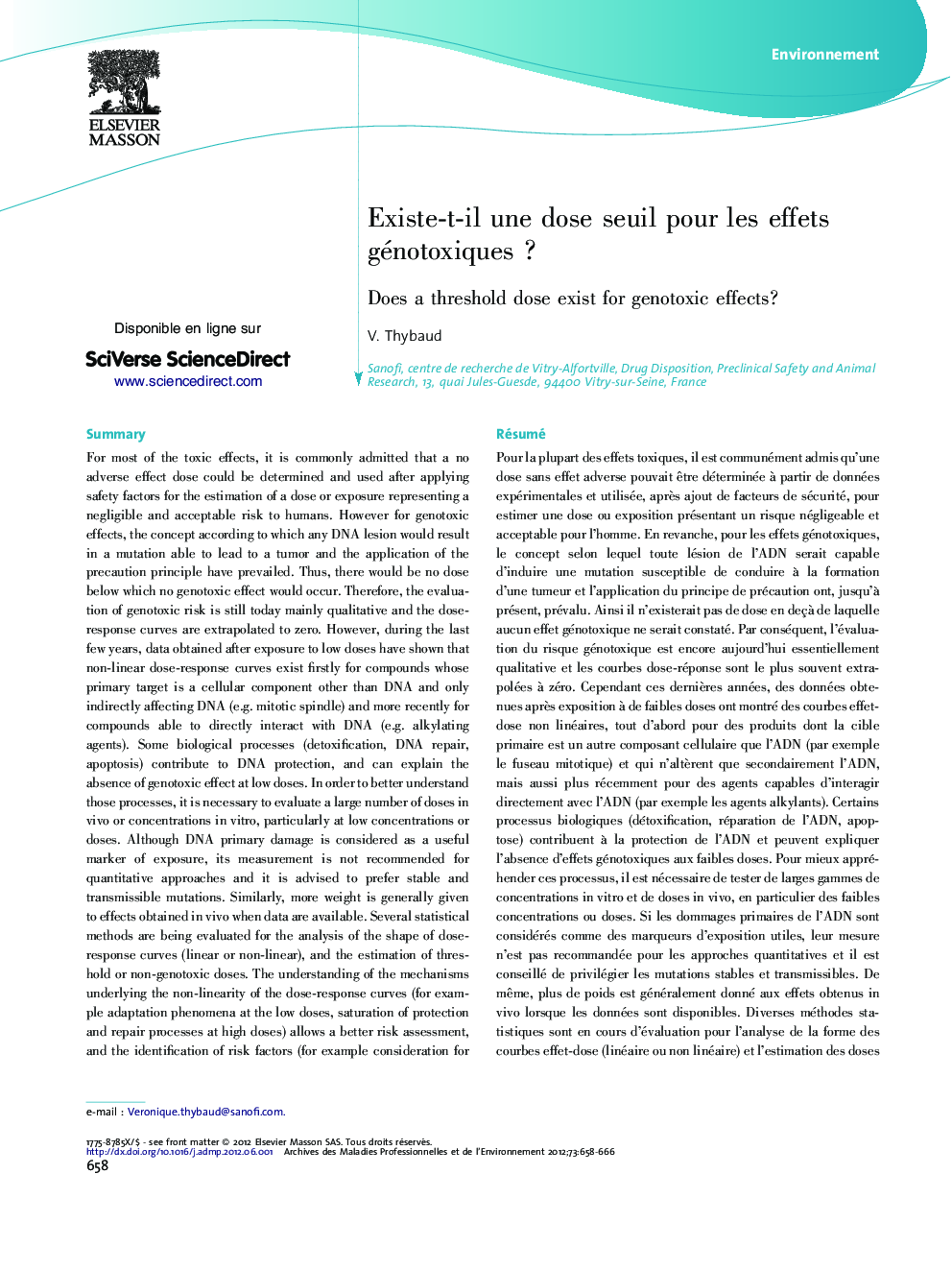| کد مقاله | کد نشریه | سال انتشار | مقاله انگلیسی | نسخه تمام متن |
|---|---|---|---|---|
| 2690904 | 1143317 | 2012 | 9 صفحه PDF | دانلود رایگان |
عنوان انگلیسی مقاله ISI
Existe-t-il une dose seuil pour les effets génotoxiques ?
دانلود مقاله + سفارش ترجمه
دانلود مقاله ISI انگلیسی
رایگان برای ایرانیان
موضوعات مرتبط
علوم زیستی و بیوفناوری
علوم محیط زیست
بهداشت، سم شناسی و جهش زایی
پیش نمایش صفحه اول مقاله

چکیده انگلیسی
For most of the toxic effects, it is commonly admitted that a no adverse effect dose could be determined and used after applying safety factors for the estimation of a dose or exposure representing a negligible and acceptable risk to humans. However for genotoxic effects, the concept according to which any DNA lesion would result in a mutation able to lead to a tumor and the application of the precaution principle have prevailed. Thus, there would be no dose below which no genotoxic effect would occur. Therefore, the evaluation of genotoxic risk is still today mainly qualitative and the dose-response curves are extrapolated to zero. However, during the last few years, data obtained after exposure to low doses have shown that non-linear dose-response curves exist firstly for compounds whose primary target is a cellular component other than DNA and only indirectly affecting DNA (e.g. mitotic spindle) and more recently for compounds able to directly interact with DNA (e.g. alkylating agents). Some biological processes (detoxification, DNA repair, apoptosis) contribute to DNA protection, and can explain the absence of genotoxic effect at low doses. In order to better understand those processes, it is necessary to evaluate a large number of doses in vivo or concentrations in vitro, particularly at low concentrations or doses. Although DNA primary damage is considered as a useful marker of exposure, its measurement is not recommended for quantitative approaches and it is advised to prefer stable and transmissible mutations. Similarly, more weight is generally given to effects obtained in vivo when data are available. Several statistical methods are being evaluated for the analysis of the shape of dose-response curves (linear or non-linear), and the estimation of threshold or non-genotoxic doses. The understanding of the mechanisms underlying the non-linearity of the dose-response curves (for example adaptation phenomena at the low doses, saturation of protection and repair processes at high doses) allows a better risk assessment, and the identification of risk factors (for example consideration for genetic polymorphisms) if extrapolated to humans. Therefore to date, numerous teams and working groups are interested not only by the qualitative aspects (absence or presence of genotoxic effects), but also by the quantitative aspects of genotoxicity risk assessment for the interpretation of results obtained in vitro and in vivo, and their extrapolation to human.
ناشر
Database: Elsevier - ScienceDirect (ساینس دایرکت)
Journal: Archives des Maladies Professionnelles et de l'Environnement - Volume 73, Issue 4, September 2012, Pages 658-666
Journal: Archives des Maladies Professionnelles et de l'Environnement - Volume 73, Issue 4, September 2012, Pages 658-666
نویسندگان
V. Thybaud,